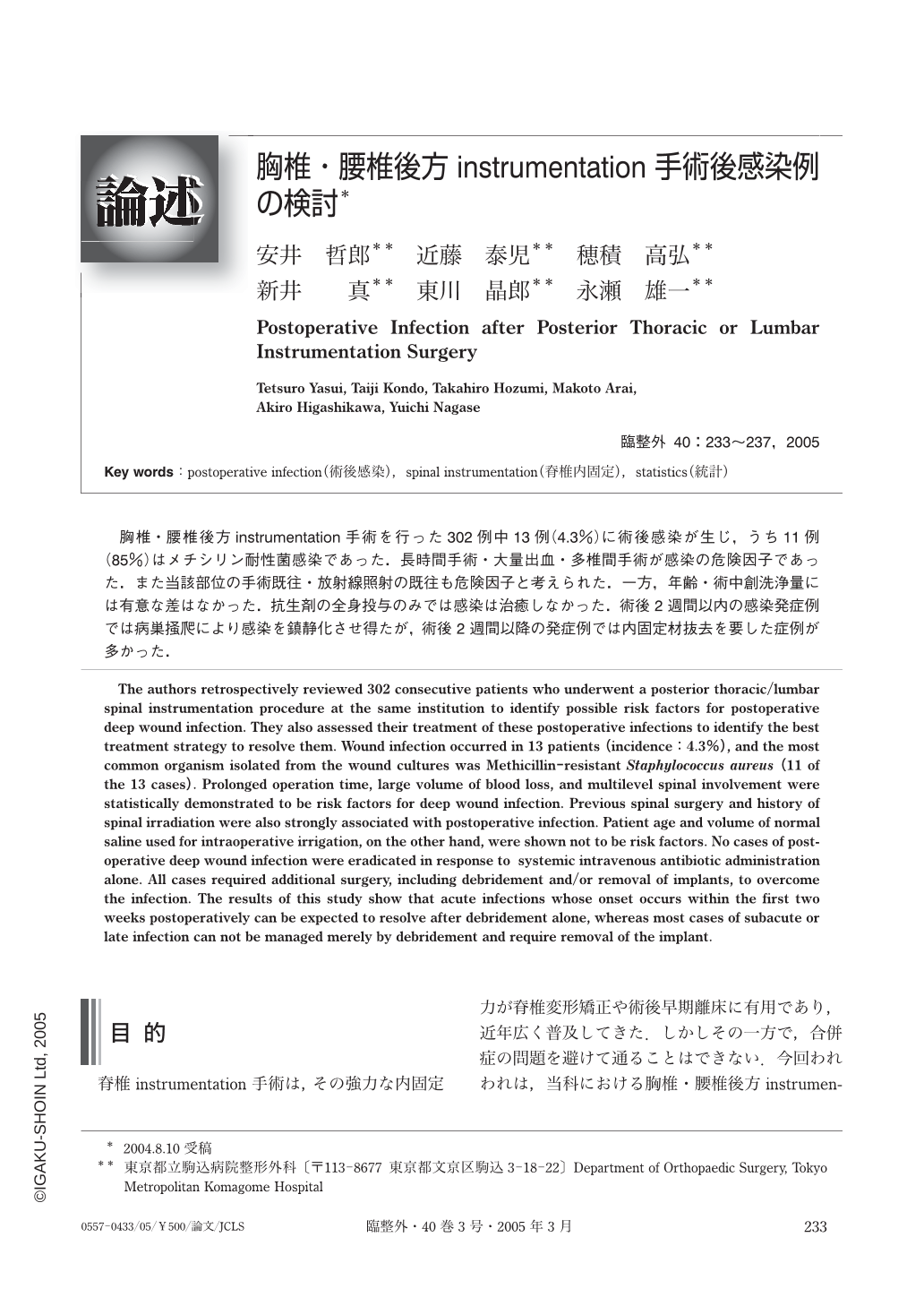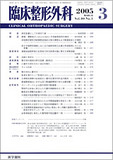Japanese
English
- 有料閲覧
- Abstract 文献概要
- 1ページ目 Look Inside
胸椎・腰椎後方instrumentation手術を行った302例中13例(4.3%)に術後感染が生じ,うち11例(85%)はメチシリン耐性菌感染であった.長時間手術・大量出血・多椎間手術が感染の危険因子であった.また当該部位の手術既往・放射線照射の既往も危険因子と考えられた.一方,年齢・術中創洗浄量には有意な差はなかった.抗生剤の全身投与のみでは感染は治癒しなかった.術後2週間以内の感染発症例では病巣掻爬により感染を鎮静化させ得たが,術後2週間以降の発症例では内固定材抜去を要した症例が多かった.
The authors retrospectively reviewed 302 consecutive patients who underwent a posterior thoracic/lumbar spinal instrumentation procedure at the same institution to identify possible risk factors for postoperative deep wound infection. They also assessed their treatment of these postoperative infections to identify the best treatment strategy to resolve them. Wound infection occurred in 13 patients (incidence:4.3%), and the most common organism isolated from the wound cultures was Methicillin-resistant Staphylococcus aureus (11 of the 13 cases). Prolonged operation time, large volume of blood loss, and multilevel spinal involvement were statistically demonstrated to be risk factors for deep wound infection. Previous spinal surgery and history of spinal irradiation were also strongly associated with postoperative infection. Patient age and volume of normal saline used for intraoperative irrigation, on the other hand, were shown not to be risk factors. No cases of postoperative deep wound infection were eradicated in response to systemic intravenous antibiotic administration alone. All cases required additional surgery, including debridement and/or removal of implants, to overcome the infection. The results of this study show that acute infections whose onset occurs within the first two weeks postoperatively can be expected to resolve after debridement alone, whereas most cases of subacute or late infection can not be managed merely by debridement and require removal of the implant.

Copyright © 2005, Igaku-Shoin Ltd. All rights reserved.


